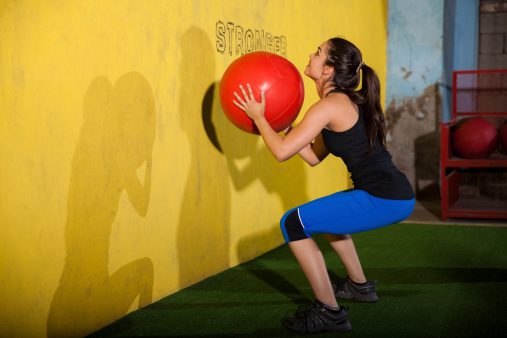Five common training mistakes triathletes make

Training for three sports at once means triathletes are busy people who are also organized, dedicated and focused. Since most of us have a full-time job and family to worry about on top of training, sometimes once we get into our triathlon rhythm it’s difficult to step back and look at the bigger picture. You follow your training and nutrition plan and hopefully get the results you’re looking for. But do you ever wonder why you go some weeks feeling more sluggish than others or why you can’t seem to get faster despite all the work you’re putting in? It might be time to see if you’re making any of these five common triathlon training mistakes.
1) Overtraining
The biggest mistake that triathletes make is overtraining. There’s a common misconception that more volume equals better results. This isn’t necessarily true and it’s something to watch out for. Instead of putting in maximum volume, think about training with maximum efficiency. That means making the most out of your key sessions in a week and taking adequate time for rest. We have plenty of training material that emphasizes the benefits of replacing some low-intensity volume with shorter, high-intensity sessions. Finally, a training plan is great but listen to your body. If you don’t feel great one week, look at your training plan and focus on completing the most important workouts of the week such as the brick. Use the other time to rest and recover.
2) Ignoring your weakness
We all love training our strengths because that’s where we feel most confident. If you’re a triathlete who loves cycling, it’s natural to have the tendency to want to ride frequently. But beware of neglecting your weaknesses. While it’s not always fun to get out and run a track session or get in the water for a hard swim, it may be what separates you from the strongest triathletes in your next race. To get the best results, triathletes need to be well-rounded. That might mean taking more time in your week to spend on improving your weakness.
3) Not lifting weights
We provide plenty of content on the benefits of cross-training and specifically strength-training for triathletes. Besides producing greater power, strength-training can help reduce chance of injury. You don’t have to lift barbells to get the benefits of strength training. Kettlebells and bodyweight conditioning are great tools to get stronger and see it pay off in your next race.
4) Ignoring post-workout nutrition
Many triathletes are great at planning meals that will help them perform their best during their next workout. But are you taking in the right nutrition after a workout to help your muscles replenish? If you don’t pay attention to your post-workout nutrition, you’re depriving your body of the chance to perform at its best during your next workout. It’s always a  good idea to take in some nutrition within the half hour after your workout. Check out our recipes for great ideas and get educated on super foods that will help you recover faster so you can keep training at your best.
good idea to take in some nutrition within the half hour after your workout. Check out our recipes for great ideas and get educated on super foods that will help you recover faster so you can keep training at your best.
5) Not enough base-training
Just as we’ve emphasized the importance of high-intensity training, it’s also extremely important (especially for beginners) to ease into a training plan so as to avoid injury and not overdo it in the early weeks. It’s common to start a new training plan and get wrapped up in training so much that you want to do more. The early phases of a training plan may not be particularly challenging, but they’re important because they prepare your body for what’s to come. Training for triathlon is a long process that builds on itself and by race day you won’t feel your best if you’ve neglected the pacing that comes with the first few weeks of your workouts.

